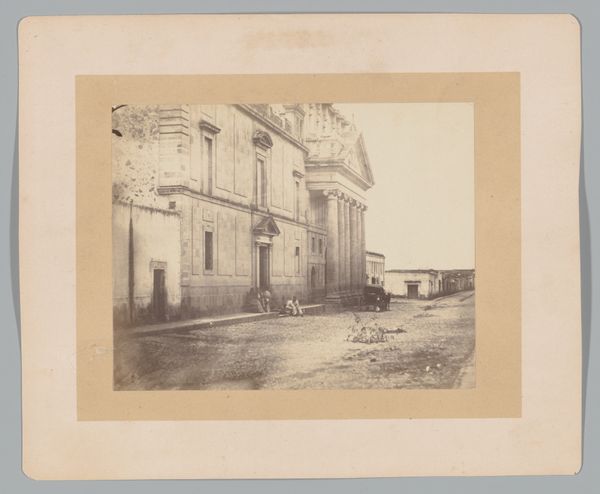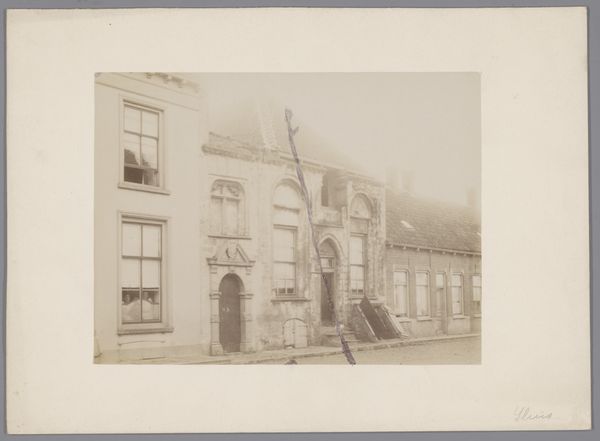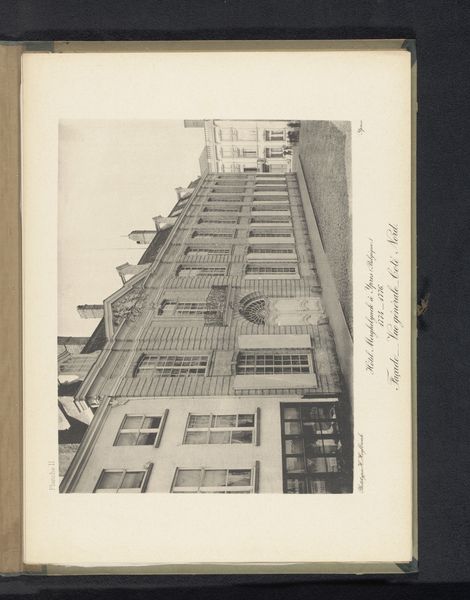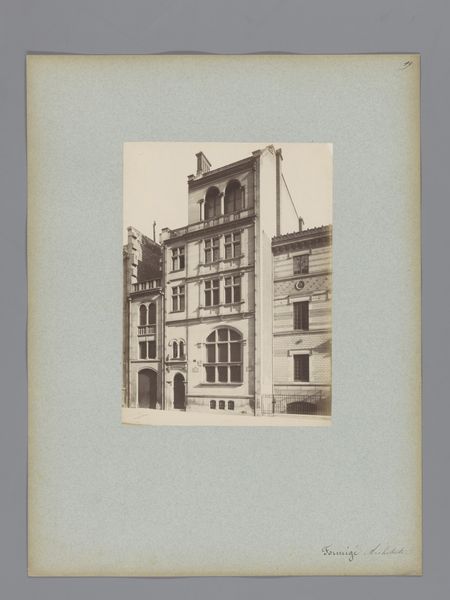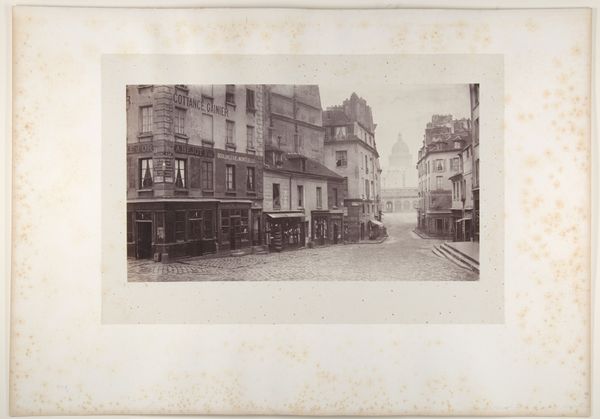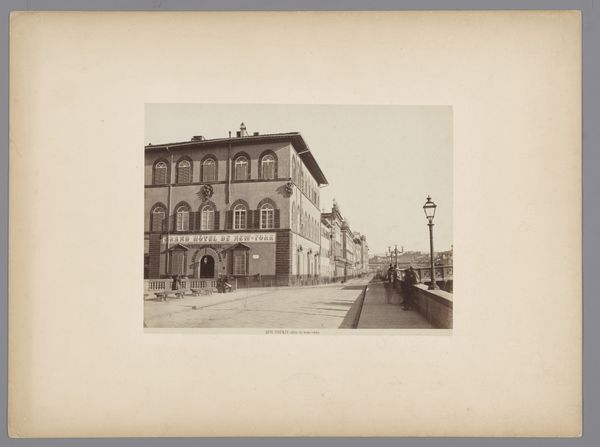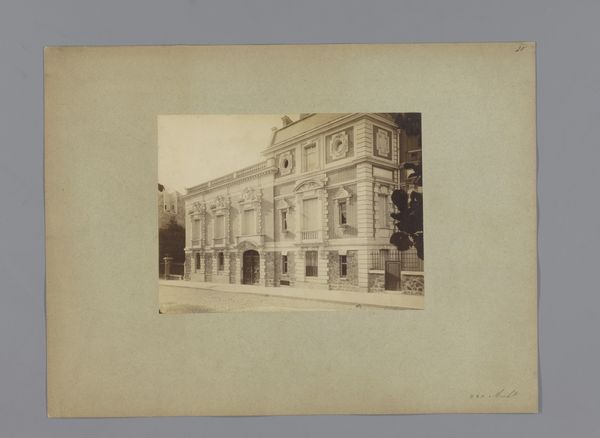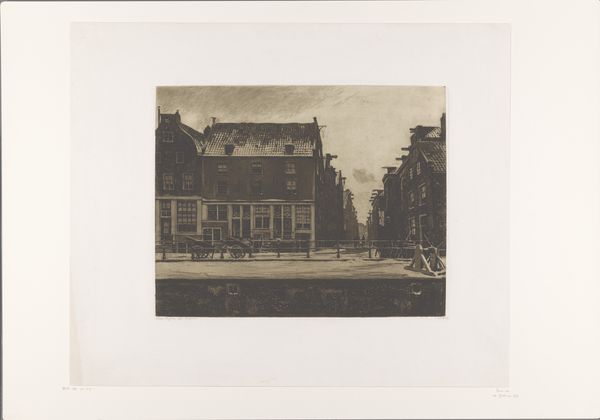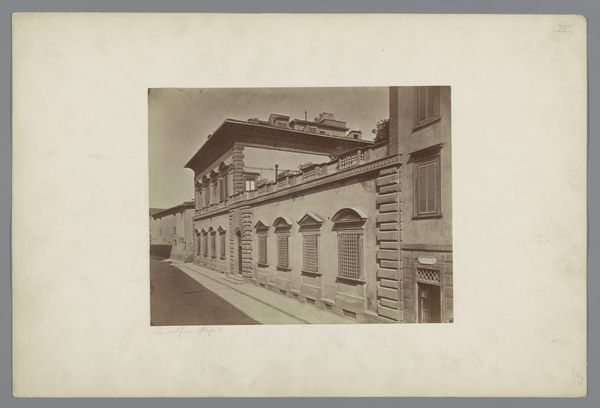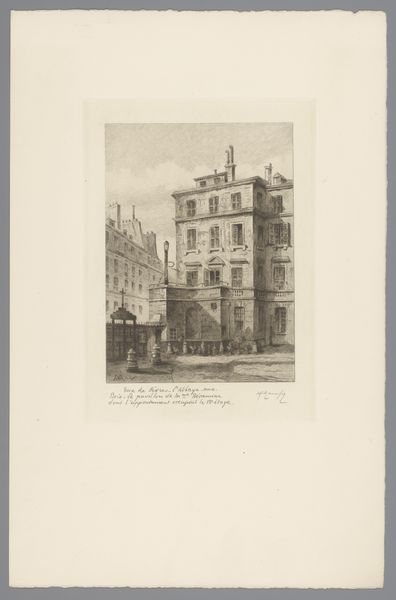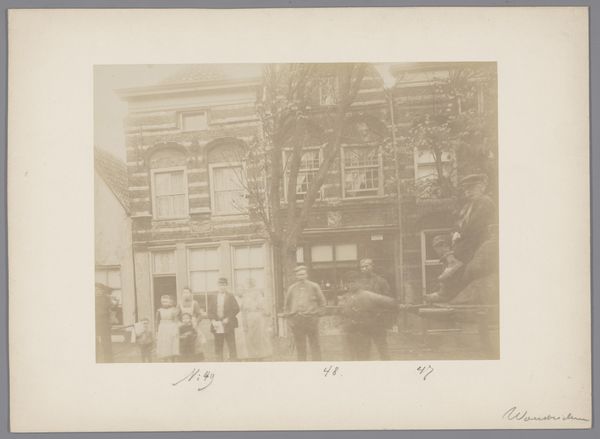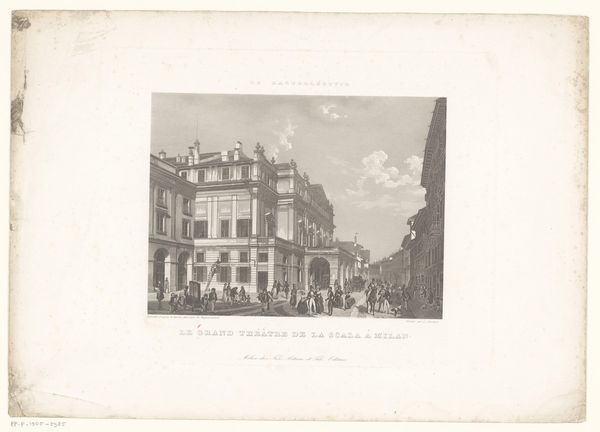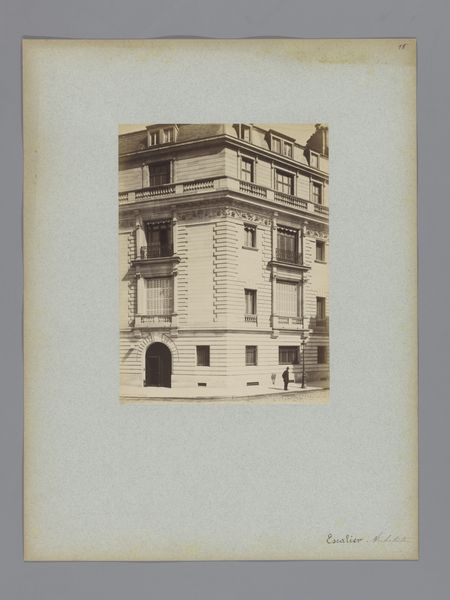
daguerreotype, photography
#
daguerreotype
#
street-photography
#
photography
#
cityscape
#
street
#
realism
Dimensions: height 162 mm, width 214 mm, height 316 mm, width 415 mm
Copyright: Rijks Museum: Open Domain
Curator: Standing before us, we have François Chéri Rousseau’s daguerreotype from around 1865 to 1875, "Street View in Saint-Étienne." What impressions does this capture for you? Editor: The mood feels...stalled. Like pressing pause on history. A muted snapshot with so many gradations of gray; and even with the light it is strangely somber. The geometric relationships are very striking in the facade of the central building; so many horizontals and verticals held in place by strong tonal contrasts. Curator: You have pinpointed Rousseau’s keen eye for realism; during his career he particularly focused on capturing urban and architectural subjects. The use of a daguerreotype in the mid-19th century provided incredibly detailed, high-resolution images for their time. Editor: Daguerreotypes feel so tangible, almost like holding a piece of the past. The detail is astounding – look at the intricate window details, and the figures on the square; however, this level of definition is oddly juxtaposed with an absence of liveliness. Do you think this static quality enhanced or hindered the photograph’s impact as a modern marvel? Curator: Good question! I feel the realism itself was enough. He was showing that a mechanical tool could depict what it *actually* looked like. The subtle composition, the quiet geometries you noticed earlier; it felt like seeing reality laid bare, without the artist's hand shaping it, which might be very affecting on an audience that had a different perception about visual art. Editor: It definitely succeeds as a time capsule, I agree; but there’s something missing to make it timeless. I find I respond to that lack rather more than I react to the photographic information I am getting. Do you get that? Curator: Well, every viewer has a different reaction and takes something different away. It also represents an important transition in art history when photography starts occupying some of painting's terrain. A beautiful historical document of Saint-Étienne. Editor: Exactly; capturing fleeting instants, giving tangible form to something intangible: the movement and texture of everyday life, transformed into pure shape and tone.
Comments
No comments
Be the first to comment and join the conversation on the ultimate creative platform.
